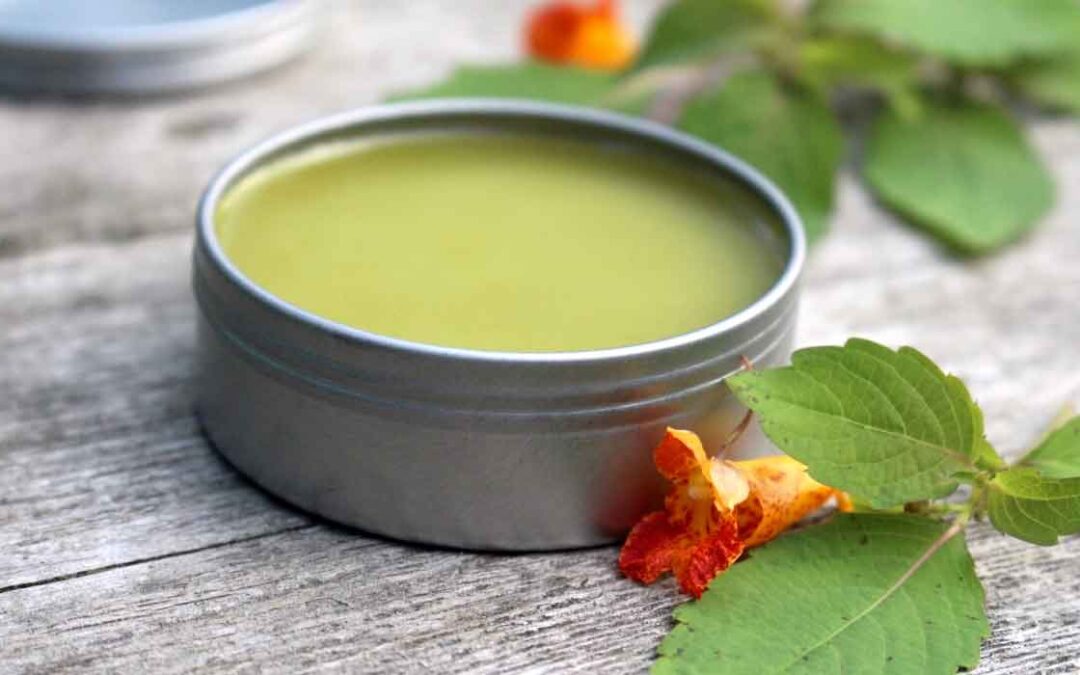Herbal Salves

Today, many people are going vegan and using home remedies. The reason is simple-free from diseases and a good positive will to eat only what nature has bestowed upon us. If we look around and gather knowledge about the herbal resources we have, we will notice that many ingredients are given to us by nature itself. Be it a refreshing aroma of lemongrass in a tea, a soothing effect of turmeric on our wounds, a good taste of ginger in a beverage, or a blueberry-infused lemon tea, herbs are everywhere.
In this article, we shall tell you how you can make use of herbal remedies to not just treat yourself to good food but to also apply topically on wounds. Herbs can be used to make herbal first-aid salves. But before getting down to the real thing, let us learn and know a bit more about herbs.
Why go herbal
Herbal life brings you more closely to nature. We use herbs as the leaf of the plant for various purposes. The best thing about them is that they can be used in many ways. You can have them directly, you can have some after drying and you can even cook or boil them. Note that if you are using any other part of the plant, be it a fruit or stem, it will be termed as a spice, not an herb. As we know, herbs are great for adding fresh flavors and colors to any eatable or drink. They have sweet and savory, both tastes. If we talk about the nutritional value, they got plenty. Also, the fact that herbs don’t have additional or artificial fat, sugar or salt, makes them more lovable.
Each herb has its own set of properties that provide health benefits to different parts and organs of our body. When you use fresh herbs, they have a smaller shelf life as no preservatives are being used. They also have highly delicate flavors. When you add them to your meals, they will last only a few minutes. Another important thing to note is that if you use a little amount of herb, they will impart a bit of flavor. But if you use them in high quantity, their flavor may overpower the taste of other ingredients in a dish.
Besides having good taste and smell, herbs are good as topical agents. Let us learn why;
Herbs as topical agents
Since ancient’s times, many herbs are used in the treatment of injuries, pains, wounds, bruises and other problems. One might find it hard to imagine getting a cure to an insect bite using a leaf. But this is indeed a fact. Many animal bites, insect bites, stings and other wounds we get can be healed with specific medicinal herbs or a combination of herbs. Even if someone gets an allergic reaction or has a reaction to some poisonous plants, applying herbs or paste of herbs can be beneficial.
Besides wounds, herbs also help in joint pains, muscle spasms, never swelling, sprains, fractures and bone pains. Some plants such as cayenne pepper help a lot in treating joint pain related to our spinal cord. The essential oil of lavender can help relieve inflammation and pain associated with it, not to mention how its fragrance helps us with anxiety. Neem leaves are used widely across the world in the form of packs or pastes to treat Common skin diseases and related pain. Rosemary and linseed oil can be used to cure neck pains or swelling. Some other unknown topical herbal agents include Boswellia, teasel, Angellica and rue.
Making a herbal first-aid salve

Imagine having first aid with no chemicals, drugs, or ingredients related to allopathic medicines. How good it would be if you can apply topical pain-relieving salves without having to worry about their side effects. This can be made possible with our list of some easy and affordable methods through which you can make herbal first-aid salves.
Salve with beeswax for bruises
Since many people might consider making an herbal salve a complicated process, we would love to start with the simplest method which is also very common. The method will help you prepare around 9 ounces of herbal salve which is enough for use.

You will need a bunch of items included 0 oz. infused herbal oil, 1 oz. beeswax, a double boiler jar, extra essential oils and clean glass jars. Some important points to note here is that you can take beeswax in grated form or pellets will also solve the purpose. You can also take metal tins instead of glass jars. Both metals and glasses are good for storage. Here, we are adding essential oil to get a hint of fragrance on applying the salve.
Start the procedure by boiling the oil in the double boiler. After few minutes when the oil becomes warm, start adding beeswax. Keep stirring until the wax melts and forms a uniform consistency. You can also test the consistency by dipping a clean spoon and then freezing it for few minutes. If the consistency is softer, then you may need to add more beeswax.
Pour the warm mixture into old jam jars or small metal tins. Before pouring, you might need to add essential oils if you opt for that method. Don’t forget to stir clean with a stick to implement all the fragrance of the essential oil. In the add, cap the containers and try to store them in a cool and dark place. These might last up to one year if stored well.
Herbal salve for burns

Every one of us has to face burn or injury related to it once in a lifetime. This is a time when you should have proper ingredients at home to treat the burn. While many procedures are included in treating a burn, there is nothing harm in preparing an herbal salve that saves money. The salve will pose no side effect and will help heal the burn completely.
For the method, you will need around 30g of raw honey, 30 g of coconut oil (unrefined), a tablespoon of beeswax and a tablespoon of sea buckthorn oil. The sea buckthorn oil is optional and you can easily buy it only. Instead of coconut oil, you can also use virgin coconut oil which is easily available in the market. Additionally, you will also need half a tablespoon of aloe Vera gel and aloe Vera juice. You can also replace aloe Vera juice with rosewater if you wish so.





